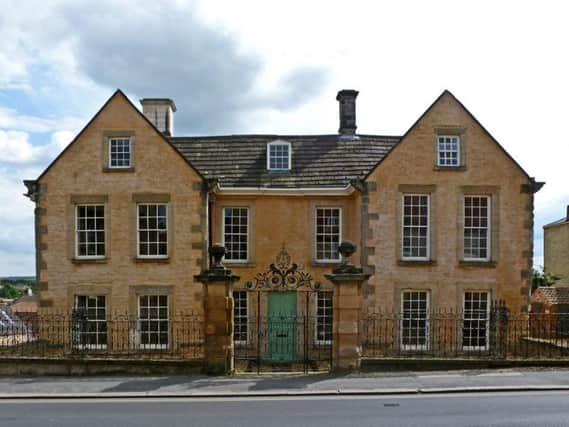Letter: York House


York House in Malton is an exceptionally significant gentry house with substantially intact panelled interiors from 1599; the 1690s and the early 18th century.
The proposal of the Fitzwilliam Estate to make of it an extension of the Talbot Hotel, itself a building dating from at least the 16th century, and to create up to eight bedrooms within it, with associated en-suite bathrooms, plumbing and electrics etc, presumably double-glazed pastiche windows when some of the existing sashes date from the 1690s; fire doors, insulation materials and numerous other requirements of building and fire regulations as well as of luxury hotel accommodation entirely unsympathetic to the retention of historic fabric and its proper performance, could not be more inappropriate and more calculated to rob Malton of perhaps its most treasured historic asset.
Advertisement
Hide AdAdvertisement
Hide AdThe work will be carried out according to the estate’s new ethos that pastiche reproduction of original fabric is as authentic as original fabric itself.
The extension of the estate’s new mission to render important historic buildings ‘fit for the 21st century’ (whatever this actually means) now settles upon York House, not only upon its interior but upon its setting, with an intention to squeeze between York House and the Talbot a pastiche neo-classical function room that will extend into and disrupt the 17th century garden lay-out, already much degraded closer to the river by a service road to the hotel accessed via a suburban golf-course-style gateway. Presumably, this lower terrace will turn rapidly into a car park for the hotel extension and wedding venue. The function room will destroy significant archaeology, including an ancient tunnel beneath the service yard that ran to the river and which some experts have considered may be Roman.
In 2010, York House had been substantially repaired using like-for-like, compatible materials; the ill-effects and negative consequences of its office use and inappropriate repair during the 20th century had been largely addressed and dealt with. The house was at the stage of careful, considered and informed final finish conservation to bring it to completion as a substantially authentic late 17th century and early 18th century interior.
The potential for the town of such a nationally scarce building, its late 17th century garden restored, required only ambition and imagination to be realised in all manner of diverse ways. More than 2,000 members of the public and experts in the field of building conservation had visited the house during the course of its repair. Its apparent salvation from years of neglect and vacancy, during which important architectural elements were stolen or otherwise removed, engaged many within Malton and for many miles around.
Advertisement
Hide AdAdvertisement
Hide AdNumerous individuals, from as far away as Bhutan, attended training courses and contributed to the repair and conservation of the house with their labour, emotion and intellectual engagement.
In all the talks I have given in the UK and abroad - since the analysis of historic materials within York House has made a major contribution to a reassessment of the importance of earth and hot mixed lime mortars nationally - no-one has failed to recognise the unique importance of York House, and to be thrilled by its erstwhile survival.
Some buildings are simply too important to be ‘made fit for the 21st century’. York House is one of these. This proposal will destroy the essence of this very special building and leave Malton as a whole the poorer and the more diminished.
I would call upon all of those who have known York House, and all those charged with its statutory protection to oppose these plans with the utmost vigour and to seek an outcome for this building that will truly benefit the people of Malton. Time is short.
Nigel Copsey
Hall Farm
Maltongate
Thornton Dale